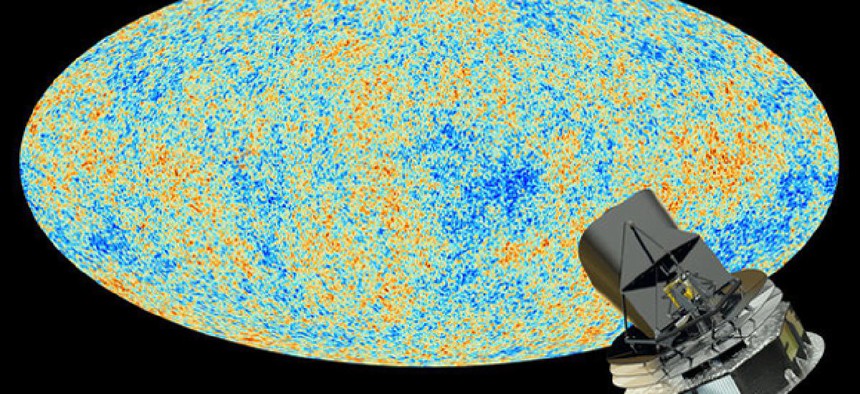New 'Cosmic Blueprint' Lets Us Look at the Earliest Days of the Universe

European Space Agency
The new map of cosmic radiation shows us the universe at 380,000 years old.
Scientists at the European Space Agency have released the "oldest" picture we have of our universe, revealing a map of cosmic radiation that shows what our skies looked like at the very earliest moments of creation.
Of course, nothing like planets or stars existed back then since the universe was just a baby—about 380,000 years old. That was when the first atoms formed, emitting the first light, and the dark "soup" of the universe finally began to fill up with actual matter. The new images released by ESA were constructed out of data gathered by the Planck space telescope over the last year and a half, revealing fluctuations in that early light that appear to perfectly support current theories about cosmology and the early expansion of the universe.
The Planck telescope detects "cosmic background radiation," which is basically the leftover heat and light that still remains in the universe after being first emitted after the Big Bang. More than 13 billion years later, that radiation has cooled to just 2.7 degrees above absolute zero, but the Planck's sophisticated instruments can detect microscopic fluctuations in the temperature, "that correspond to regions of slightly different densities at very early times." By examining the radiation today, we can work backwards to get a sense of what it was like way back when.





